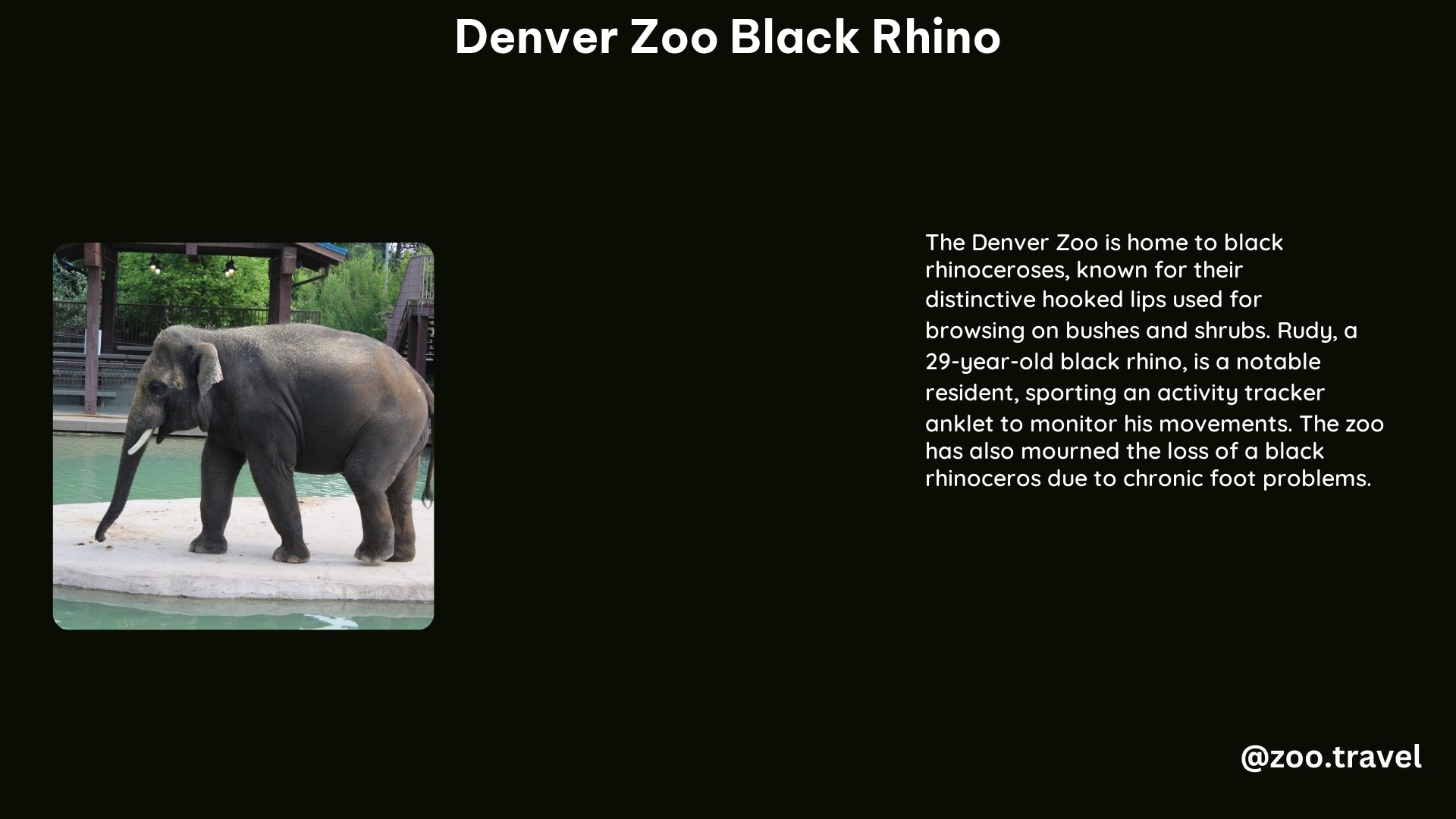The Denver Zoo is home to a remarkable black rhinoceros, a species known for its distinctive hooked lip and endangered status. As a zoo touring enthusiast, you’ll be captivated by the unique characteristics and conservation efforts surrounding this magnificent creature.
Typical Diet of the Denver Zoo Black Rhino

The black rhino at the Denver Zoo is fed a carefully curated diet that closely mimics their natural grazing habits in the wild. This diet includes:
- Grass hay
- Alfalfa
- Wild herb grain
- Browse (leaves, twigs, and other plant material)
By providing a diverse range of forage, the zoo ensures that the black rhino’s nutritional needs are met, allowing them to thrive in their captive environment.
Touching and Feeding the Denver Zoo Black Rhino

Visitors to the Denver Zoo are not permitted to touch or feed the black rhino. The zoo maintains a safe distance between the visitors and the animals to ensure the well-being of both the rhinos and the guests. This policy is in place to protect the rhinos from potential harm or stress, as well as to prevent any unintentional injuries to the visitors.
Photographing the Denver Zoo Black Rhino
While there are no specific rules or regulations regarding photographing the black rhino at the Denver Zoo, visitors are encouraged to be respectful of the animals and their habitats. It is important to follow any instructions or guidelines provided by the zoo staff or signage within the zoo to ensure the safety and well-being of the rhinos.
Mshindi: The Legendary Black Rhino of the Denver Zoo
One of the most famous black rhinoceroses to have called the Denver Zoo home was Mshindi. This remarkable rhino was known for his painting abilities, which the zoo used to raise funds for rhino conservation efforts. Sadly, Mshindi passed away in 2015 at the age of 21 due to chronic foot problems.
Habitat and Conservation Efforts at the Denver Zoo
The black rhino’s habitat at the Denver Zoo is designed to closely resemble their natural environment, with tall grasslands and thick forest areas. The zoo is actively involved in conservation efforts for this endangered species, including the sale of paintings created by Mshindi to support rhino conservation initiatives.
Visiting the Denver Zoo
If you’re a zoo touring enthusiast, be sure to add the Denver Zoo to your list of must-visit destinations. Here are the key details you’ll need to plan your visit:
| Detail | Information |
|---|---|
| Address | 2300 Steele St, Denver, CO 80205 |
| Phone Number | 720-337-1400 |
| Hours | 9:00 AM – 5:00 PM (daily) |
| Admission | Varies depending on age, membership, and other factors (check the zoo’s website for current pricing) |
Conclusion
The Denver Zoo’s black rhinoceros is a true marvel, offering visitors a glimpse into the world of this endangered species. From its unique dietary requirements to the conservation efforts surrounding it, the black rhino at the Denver Zoo is a testament to the importance of preserving and protecting these magnificent creatures. As a zoo touring enthusiast, you’ll be captivated by the opportunity to observe this majestic animal up close and learn about the ongoing efforts to ensure its survival.
